Before his death, Pema Tseden left this "masterpiece" that shocked the world!
Special feature of 1905 film network "I believe that although my father has left, he is still blessing us. I will continue to make his films and let more people see them."
"It was finally released, and it was a happy ending for him. I also miss him very much. "
"I am very lucky to cooperate with him. This experience has enriched my life. The best photography award I won is dedicated to him. "
The director died suddenly due to illness in 2023, and the eighth Tibetan film Snow Leopard, which he produced before his death, officially entered the cinema on April 3.
Although the director is gone, he left this excellent work, leaving everyone with a good memory of him and the film. In 1905, the film network interviewed Matthias Delfu, the executive director, leading actor and photography director, and tried to trace back and piece together Pema Tseden’s creative wish for Snow Leopard from their perspectives.
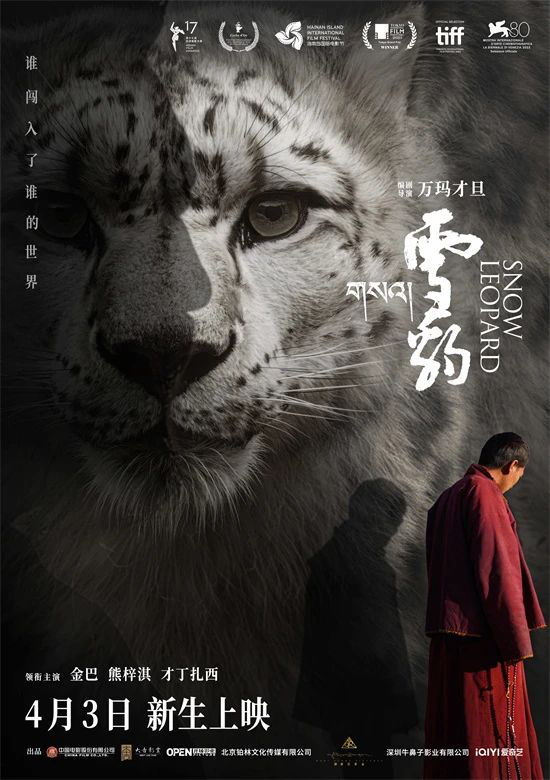
In the hinterland of the snowy plateau, the film tells the story of a snow leopard killing nine sheep kept by herders. The "Snow Leopard Lama", who likes shooting snow leopards, led a group of TV reporters to cover and report, and then focused on the conflict and reconciliation between human beings and snow leopards, the blending and collision of modernity and tradition, and the philosophical thinking of humanity and spirituality.
Since its debut, the film has won awards all over the world, winning the best film in the main competition unit of Tokyo International Film Festival, the best director in the Golden Coconut Award of Hainan Island International Film Festival, the best screenwriter and the best photography in the Asian Film Awards.
Jiu Mei Li remembers that after the premiere of Venice International Film Festival, the crew was walking in the street, and some old people congratulated them on making such a good work. "When I heard this sentence, I was very moved and pleased. I knew that this film came to their hearts, not as a courtesy and compliment."
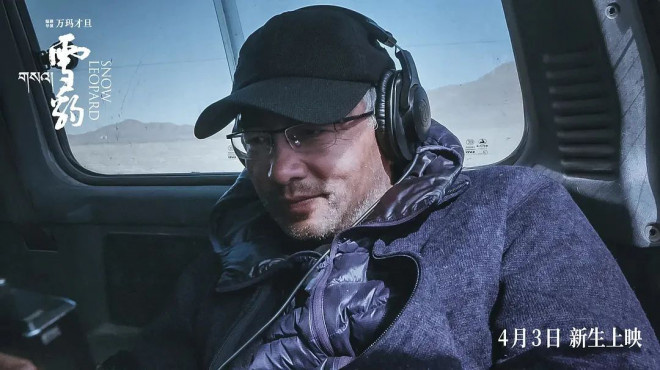
During the period from Pema Tseden’s death to the release of Snow Leopard, although the director can’t see the achievements of the film, at every important node of the film experience, Kumei said that he would say a word to his father in his heart: "Don’t worry, we have all done it."
Jiu mei cheng Li
Every shot was shot at least 8 times, miraculously waiting for a snow.
"More than a month before shooting, my father suddenly told me, why don’t you be the executive director this time. I asked him, can I? He said of course, no problem. "
Before he became the executive director of Snow Leopard, Kumi had already made his first feature film. The executive director is different from the director, and he has to be responsible for many complicated matters in the crew, so that Kumei has gained different experiences from being a director and observed his father’s state when he was filming:
"I feel his meticulous degree more closely, because he will ask for many scenes over and over again, and each shot will be shot at least eight times, so when the executive director carries out his orders with the actors over and over again, he will feel a little tired, but at the same time the effect will get better over and over again."
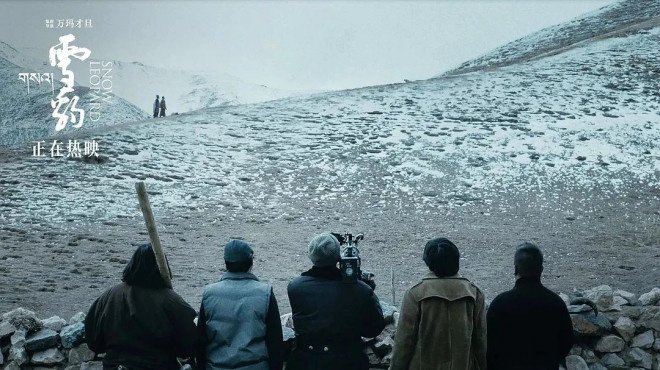
Through this film, Pema Tseden first tried CG technology with high industrial level to construct the visual image of Snow Leopard.
Zhan Hansu, the director of special effects, communicated with the director before shooting, hoping to shoot less long shots and close-ups of snow leopards, but when he received the shooting material, all the pictures he wanted to avoid were not avoided, which greatly increased the difficulty of making special effects.
The post-production of Snow Leopard therefore took nearly a year and a half, and the last long shot is also the longest shot in animal special effects in China. Pema Tseden consulted lamas who studied snow leopards, and constantly adjusted the details of snow leopards’ demeanor, voice, hair and dynamics. Jiumei recalled in a row that when my father communicated with the voice guide, he said that he hoped that Snow Leopard would reach a more anthropomorphic state.
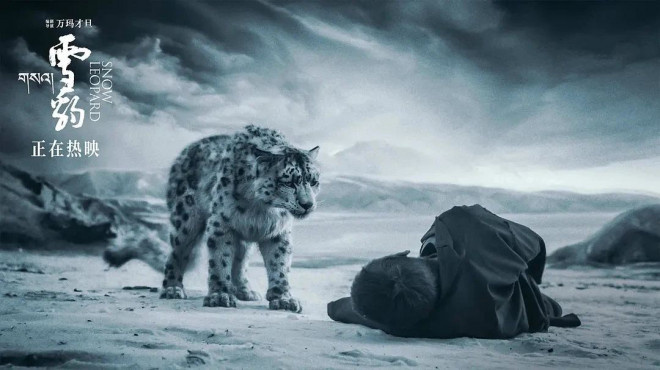
The film uses a lot of long lens scheduling, which increases the difficulty of shooting. For example, the chimney of the herdsmen’s house has to smoke all the time. If the smoke is gone, it will have to stop shooting and shoot again.
The last scene is the longest shot in the whole film, more than 10 minutes, and it is also the most difficult scene scheduling. The script says: when everyone’s emotions are about to erupt, the snow falls.
Kumei said that everyone had been rehearsing and rehearsing before waiting for the snow. Unexpectedly, a miraculous moment came: "Until it was getting dark, the snow still didn’t fall, so my father said that he couldn’t wait. Shoot it, shoot it two or three times, and everyone was very tired, especially Kimba. My father said that he would do it again in the end, in a best state. The emotions and performances in that scene made everyone present very moved, especially when Kimba was thrown to the ground, many people cried, that is, at that time, there was just snow falling from the sky. "
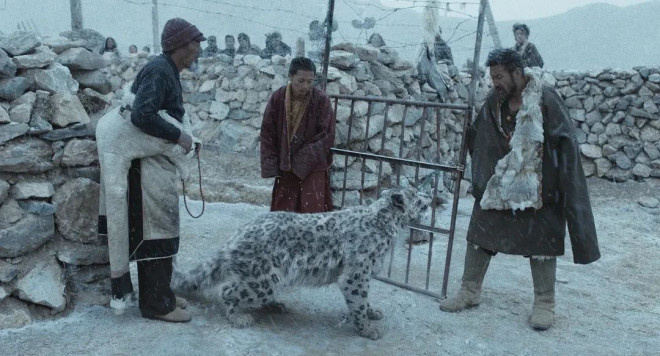
The father that Jiu Mei saw on the set was a director who didn’t express much and kept all his thoughts in his heart, but what he said was clear instructions and key requirements. "After filming the scene, he came out of the house with a smile on his face, gave everyone a thumbs up, and then everyone applauded together."
From pre-preparation to post-production, Jiumei has witnessed his father’s creative efforts for Snow Leopard for more than three years, which made him deeply realize his father’s high pursuit of film details and texture.
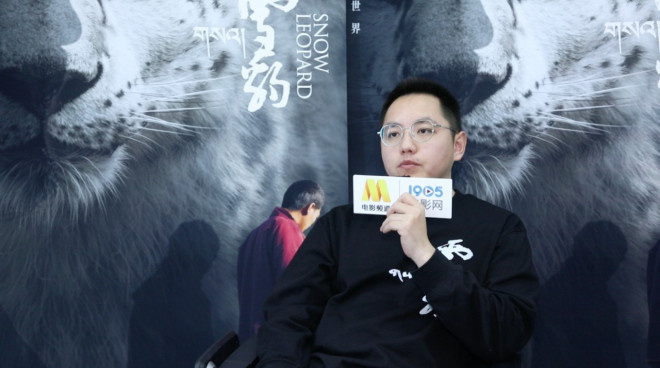
Kimba
I remained alone on the set, and no one "approached" me.
"He lives in my heart. This time Snow Leopard finally came out. I really miss him. Every time we meet, I get along with him with a particularly sincere attitude, including these works we shoot, and we try our best to shoot and perform. "
From The Stranger, actors Kimba and Pema Tseden collaborated on five feature films, and Snow Leopard is their fourth film together.
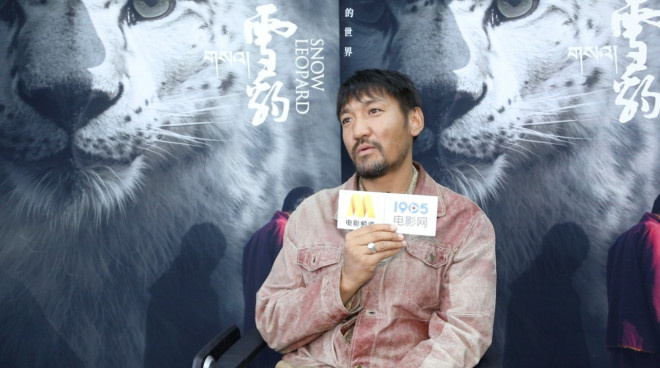
Kimba and Pema Tseden already have a tacit understanding. The director never tells him what role to play in advance. "There is a role here. Come here. Is the time ok?" I said yes and went. "
Pema Tseden is a gentle director who doesn’t like to talk much to actors. With more cooperation, Kimba gradually knows his ideas and acts in the direction he wants.
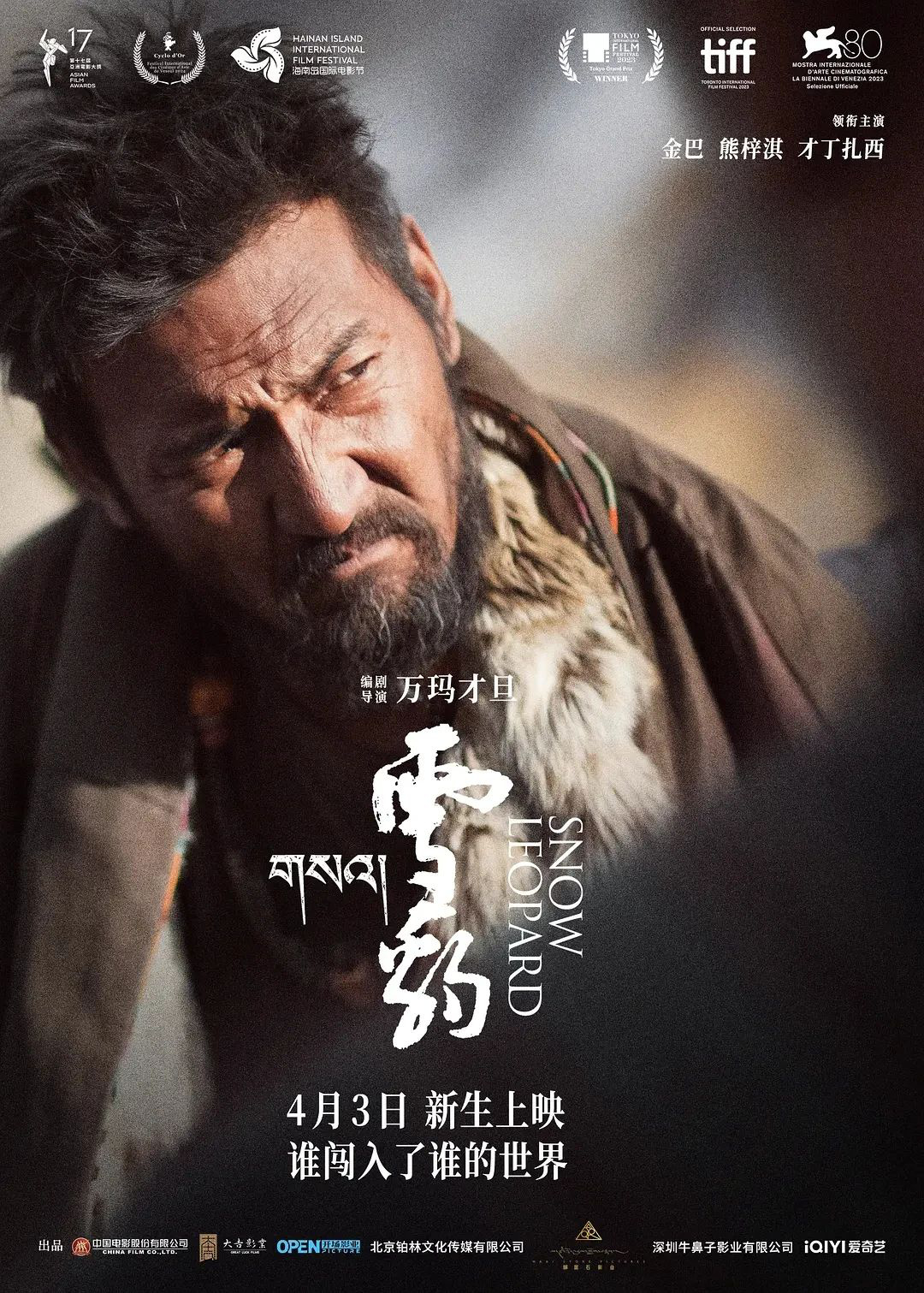
Kimba is also introverted and doesn’t like to talk much. This time in Snow Leopard, he plays a role that is in great contrast with himself — — A Tibetan herder with a hot temper insisted on killing the snow leopard and asked for an explanation. This character has a lot of lines, and there are many scenes that are angry and roaring in front of the camera.
"When I started practicing, these lines sounded like rap, and they were particularly laborious, but they were practiced like this." In the script lines, Kimba took the initiative to add some more life-like proverbs in Tibetan, which was recognized by Pema Tseden. "He is like this, and he didn’t say anything, but he applauded after filming, which shows that I did the right thing."
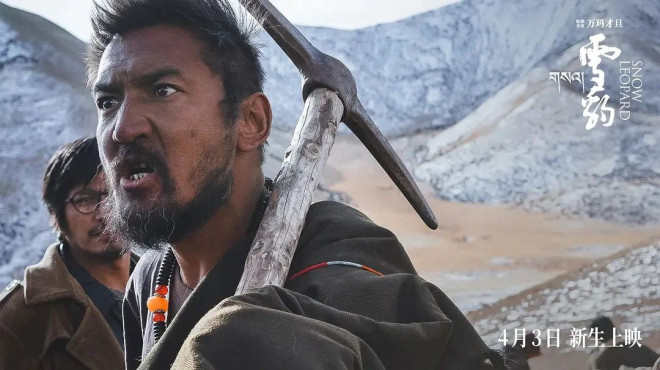
Whether in "Snow Leopard" or other crews, Kimba revealed that he has always maintained a relatively lonely state, "no one is close to me." When he is not filming, he stands at the scene and sees where the lighting, art and other parts need help in time.
Some actors will find him difficult to get along with at the scene. "Tell me that he is particularly afraid of me. I was very fierce to Lama in the movie, and he also said that he was particularly afraid of me." It is precisely his state on the set that conforms to the character setting in the film.
Click to watch: Interview | Snow Leopard Kimba: Besides being an actor, I also work with art lighting.
Looking back on 2014, Kimba just came to Beijing to study performance and added it to Pema Tseden WeChat on the recommendation of a friend. At first, he was worried that the director would not pass. "At that time, he accepted me at once and asked me how I was."
Kimba is a loyal reader of Pema Tseden’s novels. They gradually become friends and exchange their favorite literary works. Kimba also likes to write poems. Pema Tseden often encourages him. "It is this encouragement that makes me feel particularly good about myself, so I have been writing until now, but I know it is not good."
In Kimba’s mind, "Pema Tseden is a particularly important person, my noble person and my Bole".
Click to watch: Interview | Kimba misses director Pema Tseden: He is Bole and a friend.
Matthias Delfu
The real world is like a theater stage, and the surreal world is like pictures.
The combination of dynamic and static image style and the beautiful scenery of snowy plateau in Snow Leopard stand out clearly, and photography director Matthias Delfu won the best photography award in the 17th Asian Film Awards for this film.
After eight years in China from Belgium, Matthias has worked with director China. He and Pema Tseden met at the Shanghai International Film Festival, and they appreciated each other. A month later, they collaborated on Snow Leopard.
Under the leadership of Pema Tseden, Matthias went to Golog, Qinghai for the first time, with an average elevation of more than 4,200 meters, to explore the scenery, eat yak meat, and learn more about the local living environment and culture. Pema Tseden in his mind is also a man of few words. "You don’t need to talk too much, and you have a very calm feeling with him. He is also very humorous, likes joking and is a very kind person. "
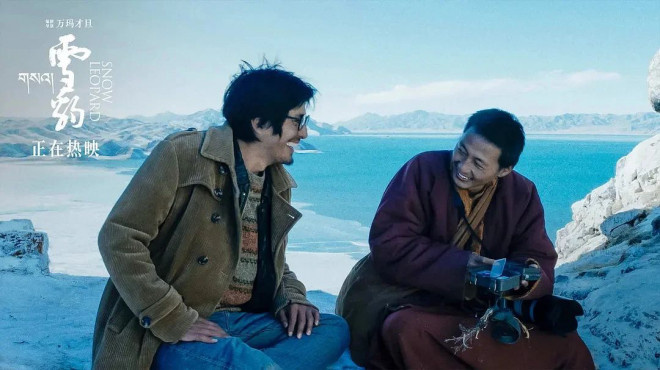
In the story of Snow Leopard, there is a real world and a surreal world, and they have been discussing how to make differences in images in the early stage of the project.
"The scheduling from one actor to another and to another actor is just like dancing. Grassland seems to have become the stage of the theater, and everyone’s attention should be very accurate. "In real time and space, they hope to take more hand-held and Steadicam lenses, and try to shoot with long lenses. A scene will let the audience enter a scene, feel the communication between people at close range, and keep the light and color matching realistic.
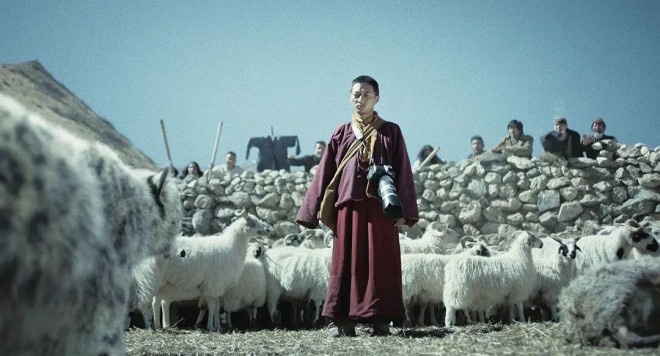
The surreal world pictures with mysterious and ancient temperament are mainly shot with fixed positions. Matthias revealed that the inspiration for photography comes from some paintings about the myth of snow leopards that Pema Tseden showed him. "Every shot is like a painting. Try not to move as much as possible, and the atmosphere of nature should be heavier and stronger."
The surreal part also uses special black and white tones. Matthias explained that he likes the German expressionist film genre in the 1920s, adding a little blue, brown and coarse graininess to the black and white, which will make the whole picture more textured.
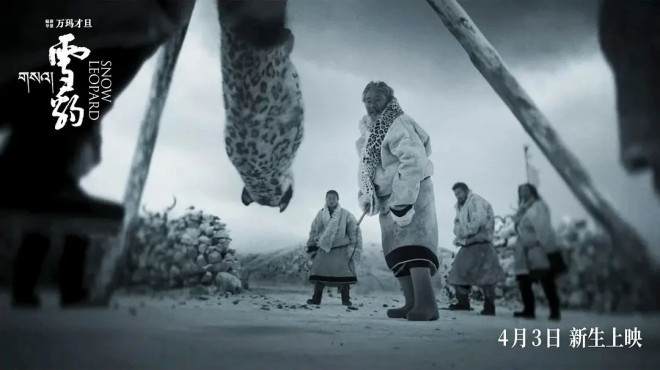
Now speaking of the days when filming Snow Leopard on the plateau, Matthias will think that he rushed into the sheepfold to shoot the snow leopard’s subjective perspective lens to capture the interesting things of rapid hypoxia, and think of the pleasant time to have tea with Pema Tseden after filming every day, full of memories:
"I am lucky to know him and create with him. In a very special environment, there are few people and many wild animals. Sometimes wolves will go down the mountain to chase our sheep, and the sky at night is full of stars. I will ask him for tea after filming one day. We just need to say a few words …"
Pema Tseden’s story is only half told.
They will insist on filming.
Pema Tseden had many works that had been put on record and scripts that were being planned before his death. Kumei listed stories that his father had not yet filmed, and he would definitely meet the audience one day. But he is not ready to shoot the projects left by his father, so he needs more accumulation. Let’s shoot the stories he wants to tell first, and when the time is right, he will definitely shoot his father’s works again.
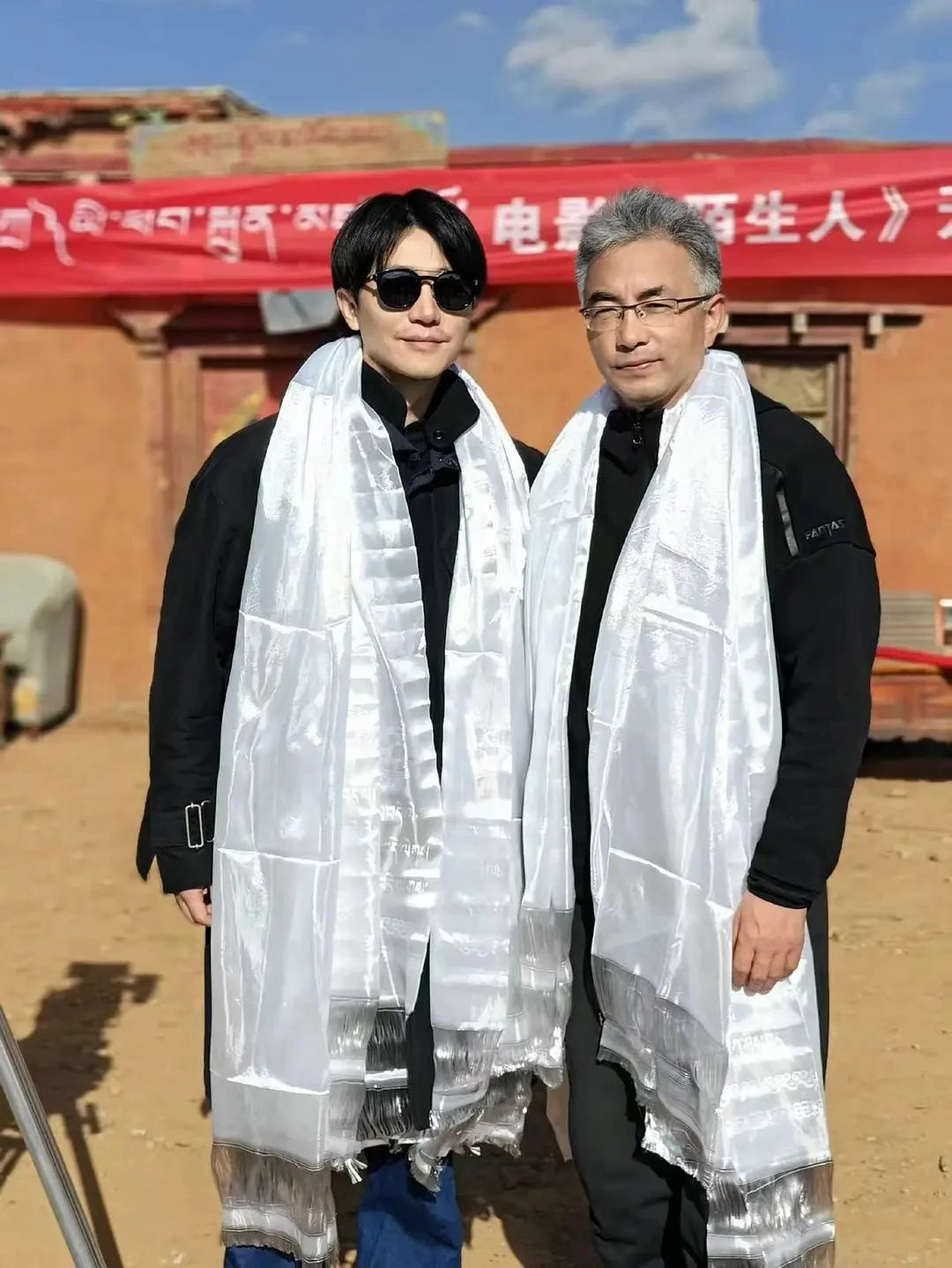
What Pema Tseden wanted to say was in Snow Leopard before waiting for the last masterpiece, The Stranger.
In Jiumei’s view, my father has always wanted to convey the strong link between the real Tibetan map and the great changes in the current era. "But what is different and breakthrough from before is the spiritual induction between the little Lama and the snow leopard, the communication between all things or the love and compassion between all things. This power takes us back to the reality level together, and maybe we will find a direction to solve the current problem ourselves."
Being the executive director of Snow Leopard was a "magical" experience for Kumeji. What impressed him most was that the whole crew set up a wild field on the grassland, surrounded by a dozen tents, and everyone woke up every day, washed their faces, brushed their teeth, and took a lunch break together, and lived there.
"It was a shooting state that had been feeling each other with nature." Kumei remembered this feeling deeply, and he wanted to catch it when he made a movie.
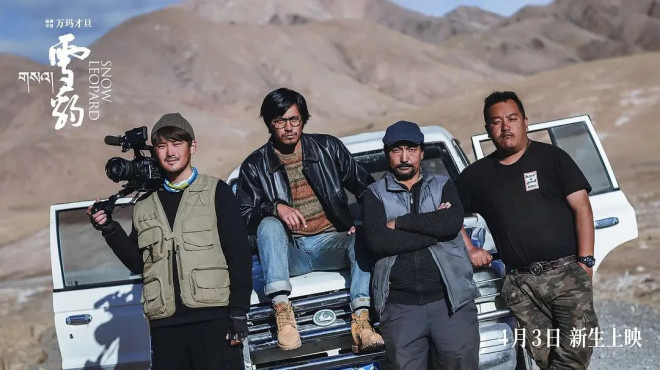
After the cooperation, Matthias Delfu found that Pema Tseden’s shooting team was very United, and everyone could do anything and help whenever they needed help. "I found that everyone in his crew seemed to have written a script, made a short film or had the desire to make a movie. This is director Pema Tseden’s desire to stay and create. ".
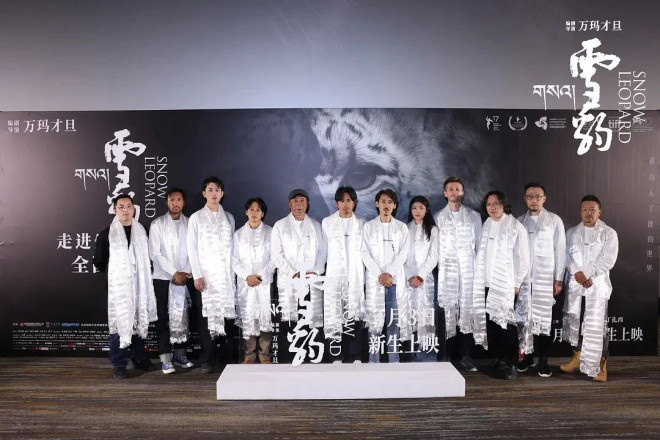
Kimba has been the core face of the new wave of Tibetan movies in China on the screen. After it was said, Kimba was the favorite actor. He is very humble about this. "To put it bluntly, I am not very good myself. They made me."
The wave of Tibetan films created by Pema Tseden is still endless, and the new generation of Tibetan filmmakers he has trained and supported will continue to inherit his precious spirit. Kimba said that they have the responsibility and obligation to let more people know about Tibetan culture and the stories on this land. "We will stick to it and keep filming."